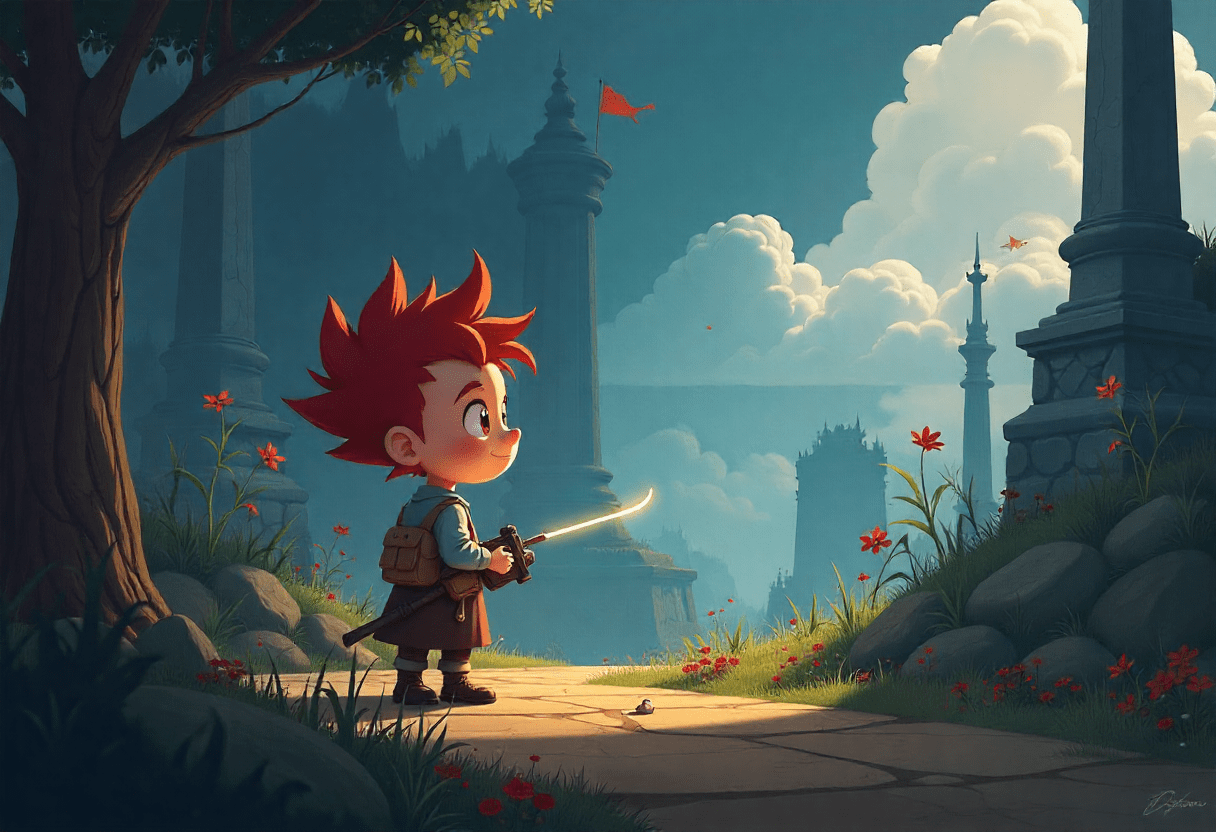Public relations (PR) isn’t just a box to tick off before launch — it’s the backbone of how your game gets seen, talked about, and remembered. For many developers, PR feels confusing, stressful, or even secondary to actual development. But here's the truth: a well-crafted PR strategy can help your game succeed, while poor PR planning can sink it, no matter how good the game itself is.
This blog breaks down the most common PR mistakes game developers make. It's designed to be clear, interactive, and informative — no fluff, just the practical advice you actually need. If you're planning a launch or wondering how to handle communication around your game, this is the guide you’ve been looking for.
1. Starting PR Too Late
The Problem
Most developers begin promoting their game only when the launch date is near. At that point, there’s no time to create momentum. You rush to push content, contact press, and generate interest—all in a matter of weeks. The result? Your game goes unnoticed.
Why This Happens
You're deep into development and focused on the actual build. Promotion feels like a "later" task. But the problem is: if no one knows your game exists until it’s released, it’s already too late.
What to Do Instead
PR should begin as soon as you have something to show. That doesn’t mean a finished build. Early concepts, prototype screenshots, and devlogs are more than enough to get people interested. Create a timeline:
- 6–12 months before release: Start teasing the game on social platforms.
- 3–6 months before release: Reach out to journalists and content creators.
- 1–3 months before release: Ramp up with trailers, beta access, influencer previews.
By spreading awareness over time, you give players and press a reason to care well before launch.
2. Failing to Define Your Unique Selling Point (USP)
The Problem
You describe your game as "a fun RPG" or "an exciting platformer." But these labels are too generic. Everyone says their game is fun — so why should someone choose yours?
Why It Matters
The games market is overcrowded. Your USP is what cuts through the noise. It's the core message behind your game — the thing that makes people go, “Okay, now that’s different.”
How to Fix It
Sit down and ask:
- What is the one thing people will remember about my game?
- Does my game offer a mechanic or theme not often seen?
- Am I solving a gap in the genre that players care about?
Then, build your messaging around that. Example:
Instead of: “It’s a roguelike RPG with cool bosses.”Say: “It’s a roguelike where every boss is designed by real community submissions, making each encounter unpredictable and personal.”
Your USP should be at the heart of your trailer, your press pitch, and even your Steam description.
3. Talking to the Wrong People
The Problem
You send the same email blast to hundreds of journalists and influencers, regardless of whether they actually cover your genre. You hear nothing back, and now you feel like no one cares.
Why It Doesn’t Work
PR is not about shouting louder; it’s about speaking directly to people who are already interested in what you’re making. Relevance is everything.
The Right Approach
Do some homework. Build a list of journalists who’ve covered games similar to yours. Follow them, read their work, and understand their style.
For influencers:
- Look for streamers who play indie games regularly.
- Find creators who have engaged audiences in your genre.
- Check their tone and values — are they aligned with your game's vibe?
When you reach out, personalise your message. Mention an article or video they did that resonated with you. Show that you’re not just mass-emailing. Thoughtful PR is memorable PR.

4. Using Technical Jargon That Alienates People
The Problem
You describe your game with phrases like “procedural biome simulation using multithreaded physics systems.” While technically accurate, it’s meaningless to most players and even to many press contacts.
Why This Hurts
You’re not writing an engineering brief, you’re trying to spark interest. When people don’t understand your pitch, they move on.
What You Should Do
Translate your technical achievements into benefits people care about:
- Technical: “Procedural environment generation”
- Clearer: “Every level is freshly generated, so no two runs feel the same.”
Keep your descriptions simple, visual, and player-focused. Your press kit, store page, and trailer should all communicate gameplay feel, not development details.
5. Relying on One Trailer or Screenshot
The Problem
You’ve made one trailer and five screenshots. That’s all you plan to use across every channel. The visuals might even be outdated by launch.
Why It’s a Mistake
People will engage with your game at different stages. If you rely on a single visual asset, you’ll limit how often and how effectively you can promote your title.
A Better Strategy
- Create multiple trailers (announcement, gameplay, release).
- Refresh screenshots as the game evolves.
- Share GIFs and clips on social channels to keep engagement high.
Media outlets are more likely to feature your game if you give them plenty of good-looking assets. Likewise, players are more likely to follow development when it looks alive.
6. Skipping a Proper Press Kit
The Problem
You pitch your game to media or influencers, but you don’t give them the tools they need to cover it. There’s no download link, no screenshots, no clear summary.
Why It Backfires
Even if someone likes your game, they won’t waste time hunting for information. You’ve made it harder for them to help you.
What a Good Press Kit Includes:
- Game title, genre, platform, and release date
- Short and extended description
- Key features
- Trailer and high-quality screenshots
- Studio bio and contact details
- Logos and key art
Tools like presskit make this process easy and professional.

7. Being Overly Corporate or Too Casual
The Problem
Some developers sound too stiff and robotic in their messaging, while others go to the extreme of being so casual that they seem unprofessional.
The Middle Ground
Speak like a human—professional, but real. You're not a faceless company or a meme account. You're a creator talking about a game you're proud of.
Example Tone:
“We’re incredibly excited to share our first trailer for Deadloop Gardens — a stealth gardening game with real-time weather and secret tunnels. It’s been a wild ride developing it, and we can’t wait to hear what you think.”
Balanced, clear, and full of personality.
8. Forgetting About Community Engagement
The Problem
You post a few tweets, upload a trailer to YouTube, and call it done. But you’re not actually engaging with players, creators, or anyone in the community.
Why This Is Short-sighted
A game with no community is harder to market. You need people to care, to follow, to talk, and to share your content.
How to Build Community:
- Share development progress regularly
- Reply to comments and questions
- Create polls or ask for input
- Host beta tests or invite feedback
- Celebrate fan art or streamers who feature your game
Even small interactions go a long way. A supportive community becomes your biggest marketing asset.
9. Being Afraid to Reuse Content
The Problem
You think, “I’ve already posted this trailer once. I don’t want to repeat myself.”
Why That’s a Mistake
Most people don’t see your content the first time. Or the second. Social platforms are fast-moving, and time zones matter. Repeating content (with slight tweaks) increases visibility.
Smart Reposting Tips:
- Break trailers into short clips
- Share screenshots with added context
- Repurpose devlog updates as blog posts
- Schedule recurring content at different hours
Consistency, not novelty, builds recognition.

10. Thinking PR Ends on Launch Day
The Problem
You push hard until release day, then stop completely. But players are only just discovering your game.
Why This Undermines Momentum
Your game’s launch is only the beginning of its public journey. Without post-launch PR, you miss chances to attract late adopters, address updates, and build long-term interest.
What to Do Post-Launch:
- Highlight reviews or positive feedback
- Announce updates, patches, and new features
- Continue engaging with press for longer-term coverage
- Showcase community content like mods or speedruns
Your PR strategy should have a post-launch plan just like your development roadmap.
Great games don’t just need great design—they need great communication. Avoiding these PR mistakes doesn’t require a massive budget or a full marketing team. It requires strategy, care, and consistency.
Remember:
- Start early
- Speak clearly
- Build relationships
- Stay active, even after launch
Game PR is a long game, but when you treat it with the same respect as your development, the results speak for themselves.
Want help building a PR strategy for your game?
At The Game Marketer, we specialise in game PR, influencer campaigns, and launch strategies that make a real impact. Get in touch to power up your next release.



